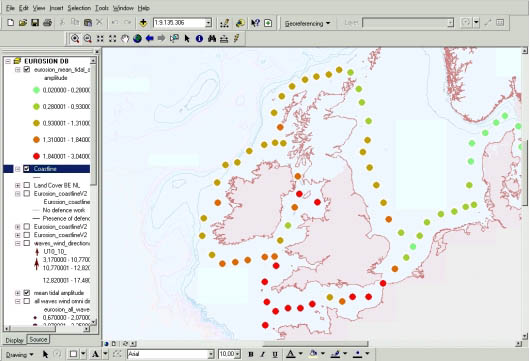| Source
of data |
Data
on tidal range at the 237 locations are extrapolated from the database
“tidal-info. com” distributed by ARGOSS. This database contains tidal
harmonics for the eight most important components, i.e. M2, S2, N2, K2,
K1, O1, P1 and Q1. The harmonics were computed by assimilating eight years
of radar altimeter orbit height measurements and tide gauge measurements
from approximately 7300 coastal stations into a shallow-water tidal model.
The satellite measurements give a good overview of the tidal patterns
on deep water, whereas the stations give accurate information for certain
locations close to the shoreline. The combination of the two, assimilated
in a tidal model, provides good information in shallow coastal seas where
tidal effects are most prominent. |
